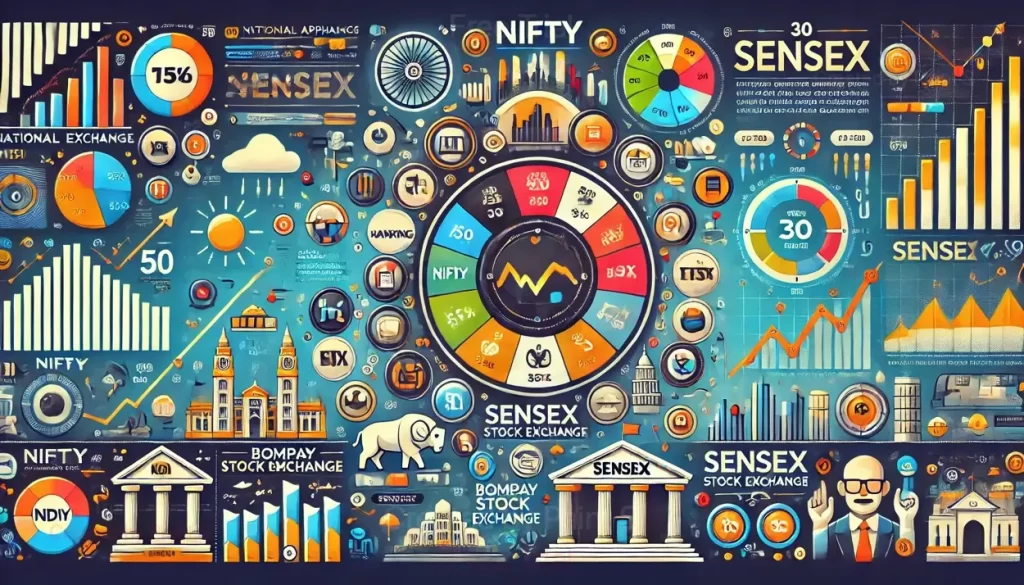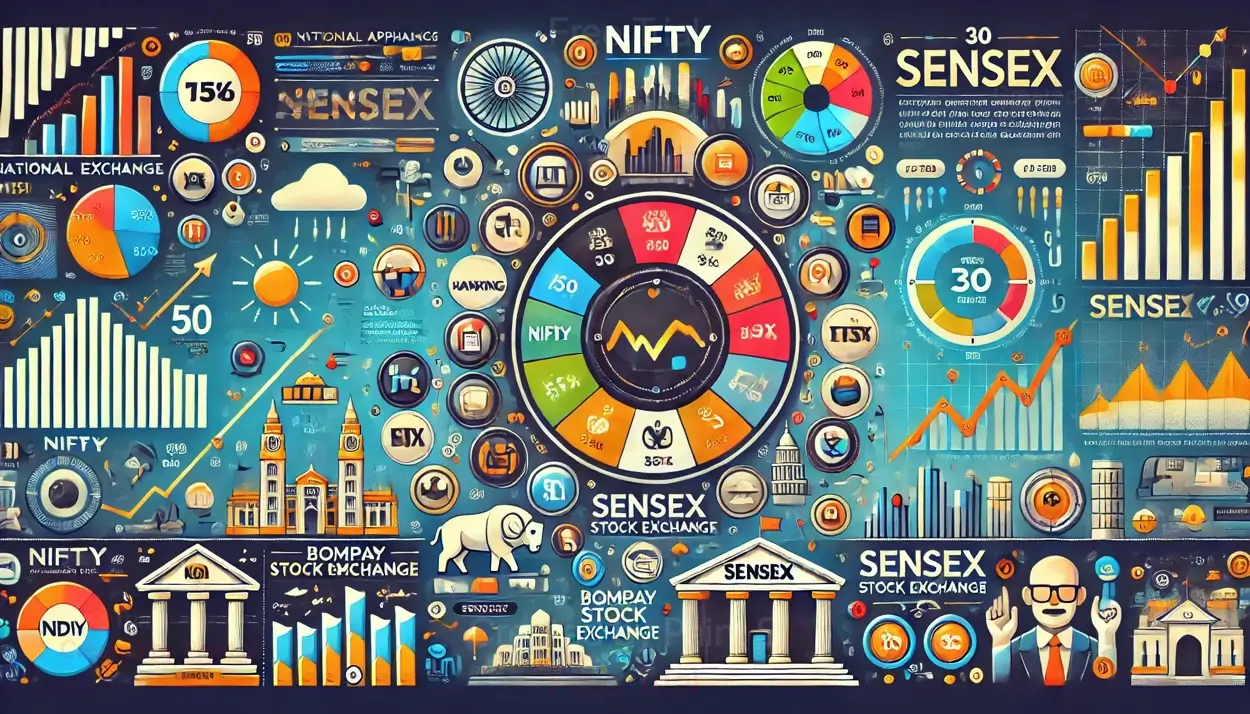If you’ve ever heard of the Indian stock market, two terms you must have come across are Nifty and Sensex. These are essential benchmarks that help investors gauge the performance of the market. Let’s break these concepts into simple terms so that you can understand them better.
Understanding Stock Market Indices
A stock market index is a measurement of a section of the stock market. It is created by grouping together selected stocks, usually the most significant or popular ones.
The index helps track the overall market sentiment and shows whether the market is moving up or down. Think of it like a report card for the stock market.
What is Nifty?
The Nifty (also called Nifty 50) is an index representing the top 50 companies listed on the National Stock Exchange (NSE) of India. These 50 companies are selected from different sectors of the economy, such as banking, IT, energy, and healthcare, among others.
The full name of Nifty is “NSE Nifty 50”, where:
- NSE refers to the National Stock Exchange.
- 50 refers to the 50 companies included in the index.
How Does Nifty Work?
The Nifty tracks the performance of these 50 companies, which are considered the most liquid and large-cap stocks in the market.
It reflects how these companies are performing collectively. If the Nifty goes up, it means most of these 50 stocks have gained value. If it goes down, it indicates most stocks have lost value.
Why is Nifty Important?
- Market Sentiment: It provides a snapshot of how the Indian stock market is performing.
- Benchmark: It acts as a benchmark for investors and mutual funds to measure the performance of their investments.
- Diversification: The 50 companies belong to different industries, offering a diversified view of the market.
#Sectors Covered in Nifty
Some of the sectors included in Nifty are:
- Banking and Finance (e.g., HDFC Bank, ICICI Bank)
- Information Technology (e.g., TCS, Infosys)
- Energy (e.g., Reliance Industries, NTPC)
- Pharmaceuticals (e.g., Sun Pharma, Divi’s Laboratories)
What is Sensex?
The Sensex(or BSE Sensex) is an index representing the top 30 companies listed on the Bombay Stock Exchange (BSE). These companies are also from various sectors and are chosen based on their market performance, size, and liquidity.
How Does Sensex Work?
It measures the performance of 30 large and well-established companies on the Bombay Stock Exchange. Like Nifty, if the Sensex goes up, it means the majority of these 30 companies are doing well, and if it falls, most of these companies have lost value.
Why is Sensex Important?
1. Indicator of Economic Health: It reflects the health of the Indian economy, as the 30 companies represent key industries.
2. Historical Significance: As one of the oldest stock indices in India, it has been a reliable indicator of market trends since 1986.
3. Global Recognition: The Sensex is closely watched by international investors to understand the Indian market.
Sectors Covered in Sensex
Some major sectors represented in the Sensex are:
- Banking and Finance (e.g., HDFC Bank, Kotak Mahindra Bank)
- IT (e.g., TCS, Infosys)
- FMCG (e.g., Hindustan Unilever, ITC)
- Energy (e.g., Reliance Industries, ONGC)
Differences Between Nifty and Sensex

| Aspect | Nifty | Sensex |
|---|---|---|
| Stock Exchanges | NSE | BSE |
| Number of Companies | 50 | 30 |
| Full Form | NIFTY 50 | Sensex Index |
| Launch Year | 1996 | 1986 |
| Base Year | 1995 | 1978-79 |
While Nifty tracks 50 companies, Sensex tracks 30. However, both aim to represent the overall market and serve as benchmarks.
How Are Nifty and Sensex Calculated?
Both Nifty and Sensex are calculated using the free-float market capitalization method.
1. Free-Float Market Capitalization: It considers only the shares available for trading in the stock market (excluding shares held by promoters or the government).
2. Index Value: It is derived by dividing the current market capitalization of the selected companies by the base market capitalization and multiplying it by 100.
Example Calculation
If the combined free-float market cap of the companies in Nifty today is ₹10 lakh crore, and the base market cap (in 1995) was ₹1 lakh crore, the Nifty value would be:
Nifty Value = Current Market Cap/Base market Cap multiple by 100
Which One Should Follow – Nifty or Sensex?
Both indices are reliable indicators of the market, and you can follow either based on your preference. However:
- If you are interested in the broader market, Nifty may be more insightful since it tracks 50 companies.
- If you prefer a more historical perspective, Sensex, being older, might be your choice.
Why Do Nifty and Sensex Move?
The values of Nifty and Sensex fluctuate because of:
1. Company Performance: Positive news about the companies in the index can drive their stock prices higher.
2. Global Events: Events like a recession, political instability, or changes in oil prices can affect the market.
3. Investor Sentiment: When investors are optimistic, they buy more stocks, pushing the index up. During pessimistic times, the index falls.
Final Thoughts
Both Nifty and Sensex are essential tools for investors and traders to understand the Indian stock market. They simplify the complex stock market into a single number, making it easier to track market performance. Whether you are a new investor or an experienced one, keeping an eye on these indices can help you make informed decisions about your investments.






